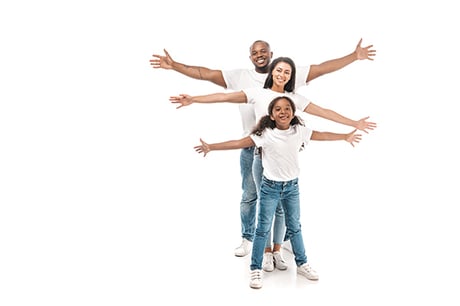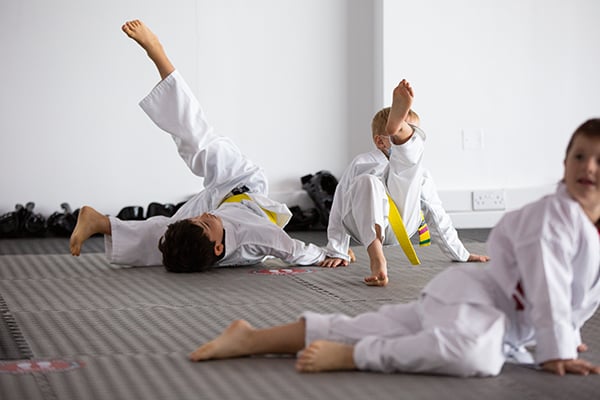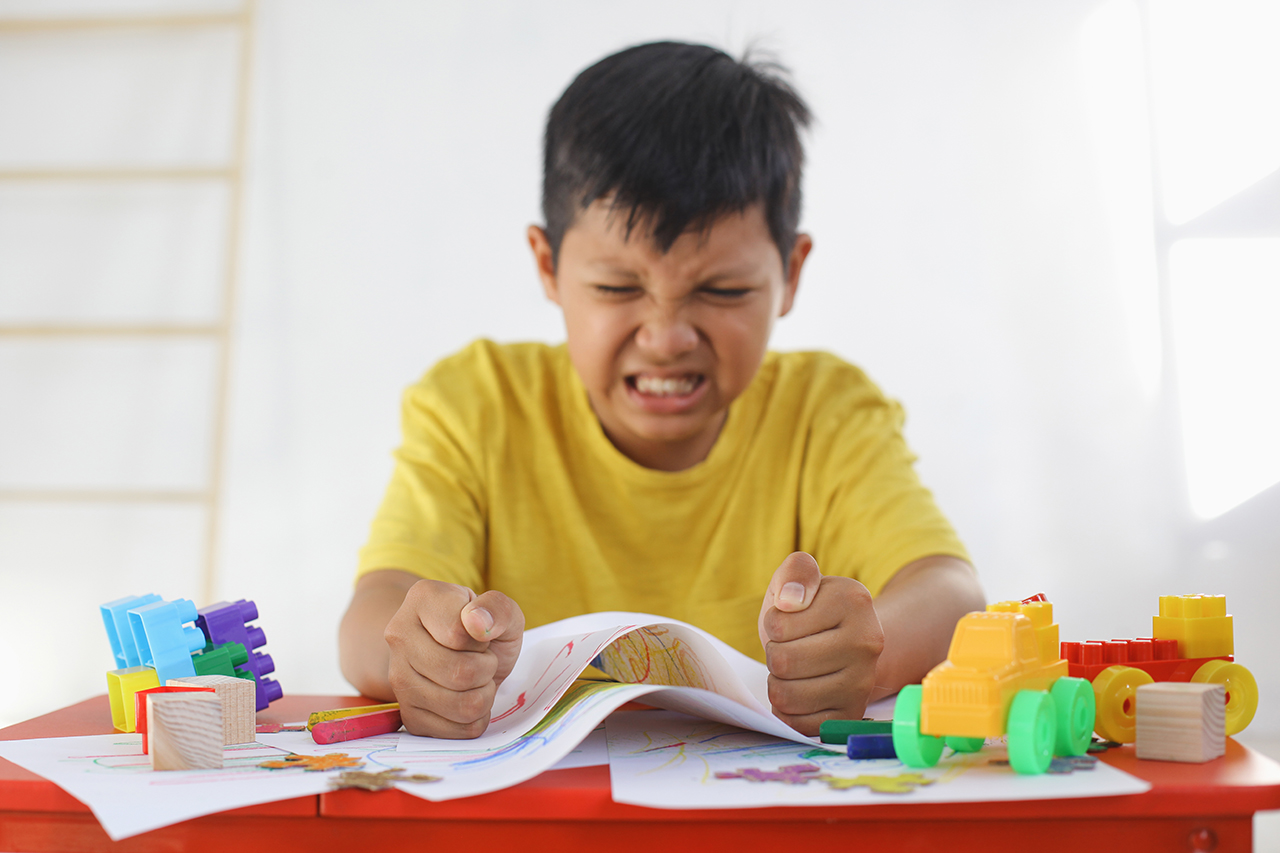As parents and caregivers, we want to help our children navigate their emotions in a healthy and productive way. Emotional regulation is a crucial skill for children to learn, as it allows them to manage their feelings and reactions to different situations. Emotional regulation is a crucial skill for children to learn, as it allows them to manage their feelings and reactions to different situations. One of the most effective ways to teach emotional regulation is by modeling it yourself. Children learn by example, and they will be more likely to regulate their own emotions in a healthy way if they see you doing the same. Here are five simple techniques you can use to help children learn emotional regulation.
Model Emotional Regulation
 Modeling emotional regulation means showing your child how to manage your own emotions in a healthy way. This can involve taking a step back from a situation when you feel overwhelmed, using deep breathing exercises or mindfulness techniques to calm down, or expressing your feelings in a productive way. For example, instead of getting angry and shouting, you might say "I feel frustrated right now because..." and explain why you're feeling that way.
Modeling emotional regulation means showing your child how to manage your own emotions in a healthy way. This can involve taking a step back from a situation when you feel overwhelmed, using deep breathing exercises or mindfulness techniques to calm down, or expressing your feelings in a productive way. For example, instead of getting angry and shouting, you might say "I feel frustrated right now because..." and explain why you're feeling that way.
When your child sees you managing your own emotions in a healthy way, they will be more likely to do the same. They will learn that it's okay to feel strong emotions, but that it's important to manage them in a way that doesn't hurt themselves or others. Modeling emotional regulation can also help build trust between you and your child, as they see that you are open and honest about your own emotions.
It's important to note that modeling emotional regulation doesn't mean hiding your emotions or pretending that everything is always fine. It's okay to show your child that you feel sad, angry, or frustrated at times. The key is to show them how to manage these emotions in a healthy way, rather than reacting impulsively or lashing out.
Practice Mindfulness
 Mindfulness is the practice of being present in the moment and observing your thoughts and feelings without judgment. It can be a powerful tool for helping children learn emotional regulation, as it allows them to become more aware of their own emotions and reactions to different situations.
Mindfulness is the practice of being present in the moment and observing your thoughts and feelings without judgment. It can be a powerful tool for helping children learn emotional regulation, as it allows them to become more aware of their own emotions and reactions to different situations.
One simple way to practice mindfulness with your child is to take a few minutes each day to sit quietly and focus on your breathing. Encourage your child to notice their thoughts and feelings without judging them, and to let them pass without getting caught up in them. This can help your child learn to manage their emotions in a more productive way, rather than reacting impulsively or getting overwhelmed.
There are many different mindfulness techniques that you can try with your child, depending on their age and interests. For example, you might try:
- Guided meditations: There are many mindfulness apps and websites that offer guided meditations for children, which can help them learn to focus their attention and regulate their emotions.
- Mindful coloring: Coloring can be a calming and meditative activity that helps children focus on the present moment and express their emotions in a creative way.
- Mindful breathing: Teach your child to take deep breaths when they're feeling upset or overwhelmed. Encourage them to focus on their breath as they inhale and exhale, and to let go of any distracting thoughts or feelings.
- Mindful movement: Activities like yoga, tai chi, or dance can help children become more aware of their bodies and their emotions. Encourage your child to move in a way that feels good to them, and to pay attention to how different movements make them feel.
Encourage Emotional Expression
 Encouraging emotional expression is another important technique for helping children learn emotional regulation. When children feel comfortable expressing their emotions in a healthy way, they are more likely to regulate their emotions effectively and avoid suppressing them.
Encouraging emotional expression is another important technique for helping children learn emotional regulation. When children feel comfortable expressing their emotions in a healthy way, they are more likely to regulate their emotions effectively and avoid suppressing them.
One way to encourage emotional expression is to create a safe and supportive environment for your child to share their feelings. This can involve actively listening to your child when they speak, validating their emotions, and avoiding judgment or criticism. For example, if your child is upset, you might say "I can see that you're feeling really sad right now. Do you want to talk about what's going on?"
It's also important to encourage your child to express their emotions in a healthy way. This might involve teaching them how to use "I" statements to express their feelings, or helping them find a creative outlet for their emotions, such as writing, drawing, or singing. By giving your child tools to express their emotions in a healthy way, you're empowering them to manage their emotions effectively and avoid suppressing them.
It's worth noting that emotional expression doesn't mean allowing your child to express their emotions in an uncontrolled or harmful way. Encouraging emotional expression means helping your child find healthy ways to express their emotions, rather than bottling them up or lashing out. It's important to set clear boundaries and expectations for behavior, while also supporting your child's emotional needs.
Teach Coping Strategies
 Teaching coping strategies is another effective way to help children learn emotional regulation. Coping strategies are techniques or behaviors that individuals use to manage stress, anxiety, and other challenging emotions. By teaching your child coping strategies, you're providing them with the tools they need to manage their emotions effectively.
Teaching coping strategies is another effective way to help children learn emotional regulation. Coping strategies are techniques or behaviors that individuals use to manage stress, anxiety, and other challenging emotions. By teaching your child coping strategies, you're providing them with the tools they need to manage their emotions effectively.
One effective coping strategy is deep breathing. Deep breathing can help your child feel more calm and centered, and can be done anywhere, at any time. Encourage your child to take slow, deep breaths in through their nose, and exhale slowly through their mouth. You can practice deep breathing together as a family, or encourage your child to use this technique when they feel stressed or overwhelmed.
Another effective coping strategy is mindfulness. As mentioned earlier, mindfulness involves being present in the moment and observing your thoughts and feelings without judgment. You can teach your child mindfulness by practicing it together, or by using guided meditation apps or videos. When your child is feeling stressed or anxious, encourage them to take a few minutes to practice mindfulness and focus on their breath.
Other coping strategies may include physical activity, spending time in nature, or engaging in hobbies or activities that your child enjoys. By teaching your child a range of coping strategies, you're helping them build resilience and develop the skills they need to manage challenging emotions effectively.
It's important to note that coping strategies are not a one-size-fits-all solution. What works for one child may not work for another, and it may take some trial and error to find the coping strategies that work best for your child. Encourage your child to try different coping strategies and find the ones that feel most effective for them.
Encourage Emotional Expression
Encouraging emotional expression is an important technique for helping children learn emotional regulation. When children are allowed and encouraged to express their emotions, they learn to recognise and manage their feelings in a healthy way, rather than bottling them up or suppressing them.
One way to encourage emotional expression is to create a safe and supportive environment for your child to share their emotions. This involves actively listening to your child when they speak, validating their emotions, and avoiding judgment or criticism. When your child feels that they can share their emotions without fear of being judged or criticized, they are more likely to be open and honest about how they feel.
It's important to model healthy emotional expression yourself. This means acknowledging and expressing your own emotions in a healthy way, rather than suppressing them or lashing out. When your child sees you expressing your emotions in a healthy way, they learn to do the same.

Encouraging your child to use "I" statements can also help them express their emotions in a healthy way. "I" statements focus on the speaker's feelings and avoid blaming or accusing others. For example, instead of saying "You always ignore me," your child might say "I feel ignored when you don't listen to me." This approach helps your child take ownership of their emotions and express them in a way that is less likely to be confrontational.
Another way to encourage emotional expression is to help your child find creative outlets for their emotions. This might involve encouraging them to write in a journal, draw or paint, or express themselves through music or dance. Creative expression can be a healthy way for your child to explore and process their emotions, without feeling like they need to bottle them up or keep them hidden.
Finally, it's important to remember that emotional expression does not mean allowing your child to express their emotions in an uncontrolled or harmful way. Encouraging emotional expression means teaching your child healthy ways to express their emotions, such as through talking, writing, or creative expression. It's important to set clear boundaries and expectations for behavior, while also supporting your child's emotional needs.
Conclusion
Helping children learn emotional regulation is an ongoing process that requires patience, practice, and persistence. By modeling healthy emotional regulation, practicing mindfulness, using positive reinforcement, teaching coping strategies, and encouraging emotional expression, you can help your child develop this essential skill. Remember to be patient with your child as they learn, and to celebrate their successes along the way. With time and practice, emotional regulation can become a natural and effective part of your child's emotional toolkit.
Take our Breakthrough Area Assessment to learn more about which area of your child's life needs the most support. Simply click the link below.


